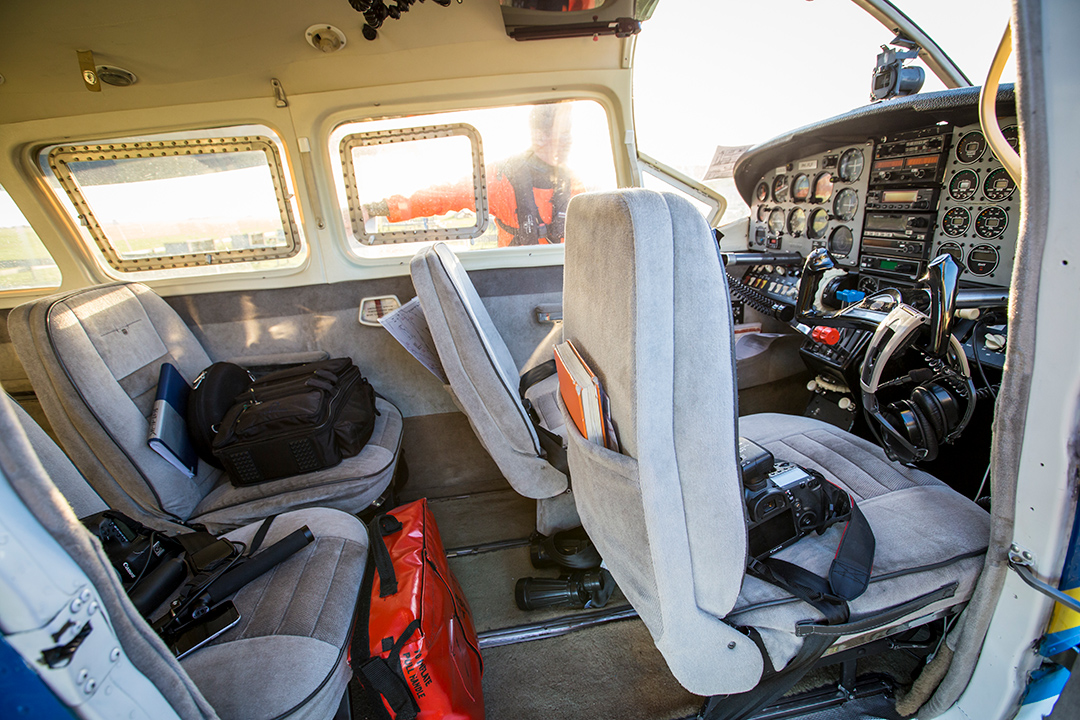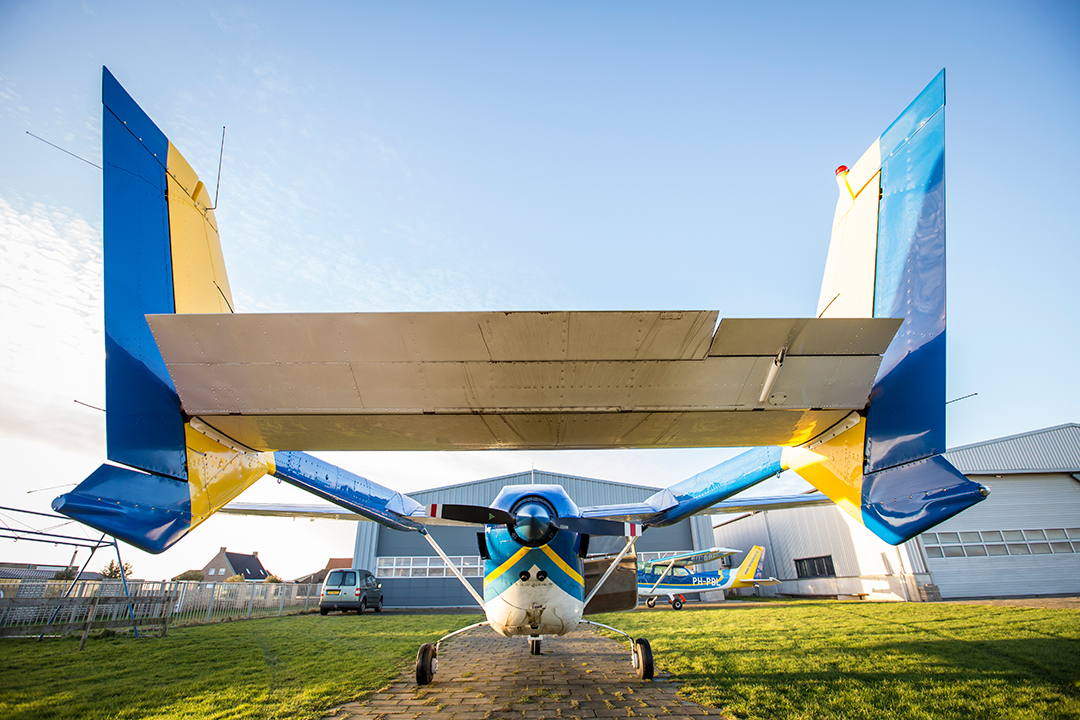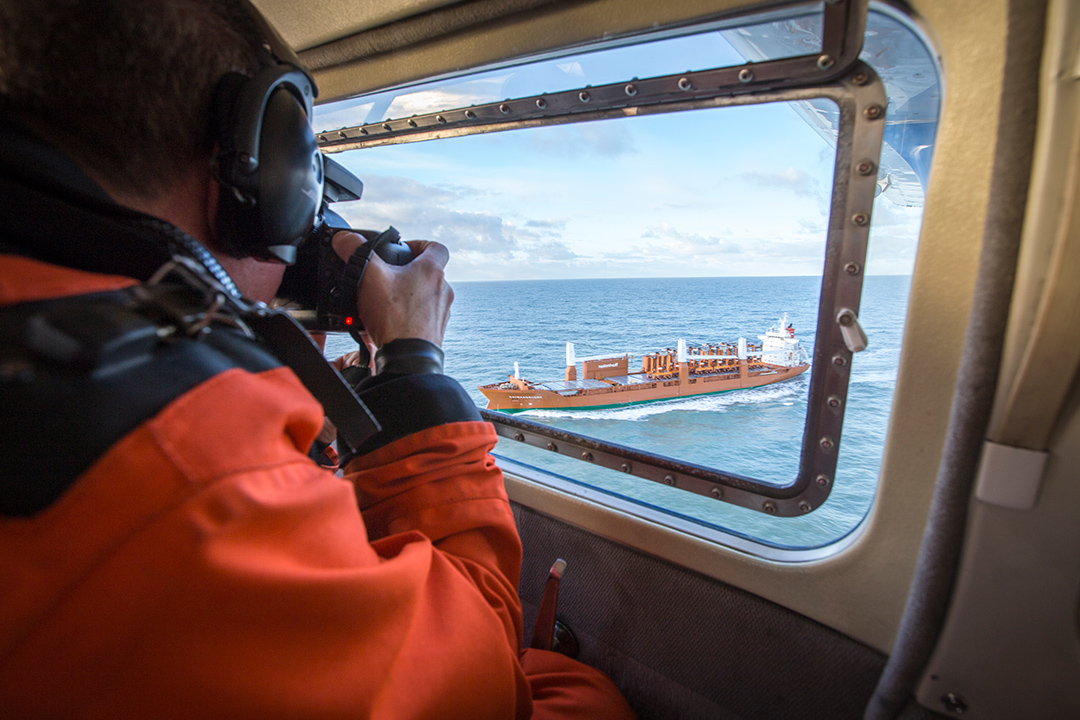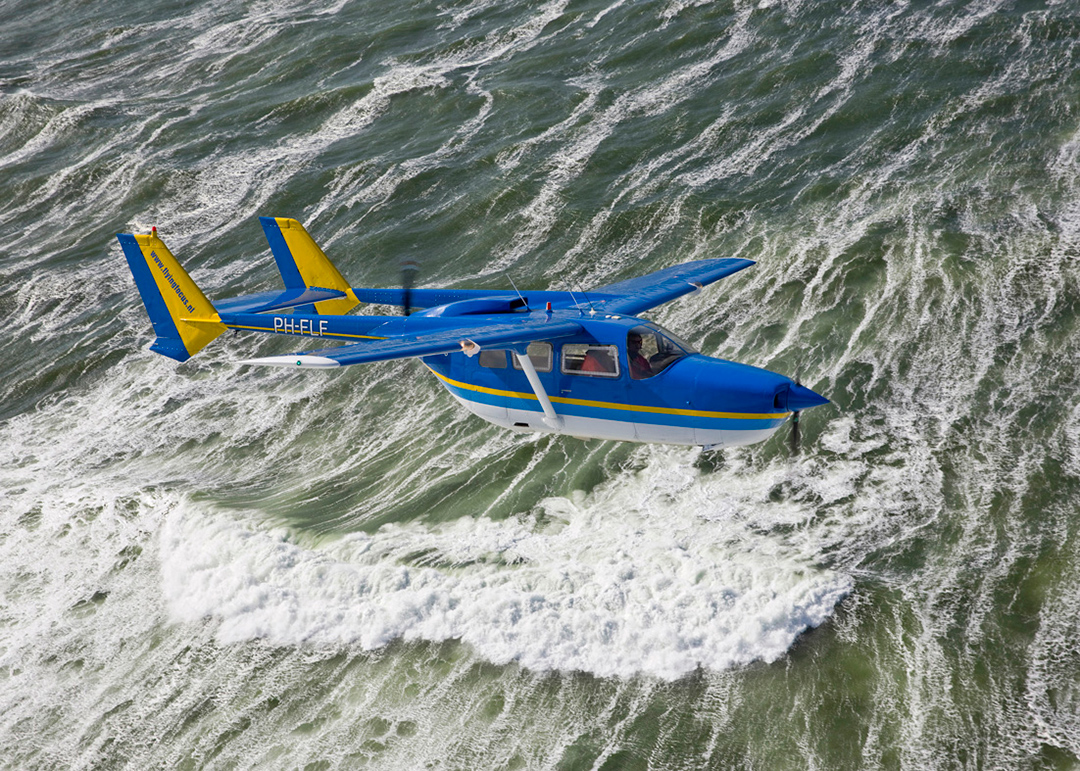For many years we have been operating single-engine Cessna’s over water, always much aware of our vulnerability and dependence of a good functioning engine. We never had engine trouble during thousands of flying hours, nevertheless we always have been prepared by wearing survivalsuits, life jackets and Personal Locator Beacons. Because you never know…. In the course of years we were commissioned for photoflights further and further away offshore, sometimes also over the high seas on a stormy North Sea. I, personally, never had a problem with the single-engine photoflying over water, as long as there is a chance of survival, in case it went wrong. So not too far offshore in areas where there is no shipping or other activity and in wintertime not too far offshore because of the low water temperature.
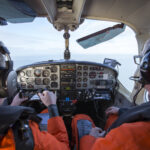 In 2003 we had a photoflight above the shallow waters of the Stortemelk entrance near Vlieland with Beaufort 8 from the northwest to photograph beamtrawlers between the high and breaking seas. Sitting in the open photo window I could even hear the waves breaking. After the flight I told this to the pilot and we started a conversation about our chances in case of engine failure. We concluded our chances would have been very slim, because of the high seas. What kind of aircraft would be better for this job? We promised to start searching for an alternative type of aircraft.
In 2003 we had a photoflight above the shallow waters of the Stortemelk entrance near Vlieland with Beaufort 8 from the northwest to photograph beamtrawlers between the high and breaking seas. Sitting in the open photo window I could even hear the waves breaking. After the flight I told this to the pilot and we started a conversation about our chances in case of engine failure. We concluded our chances would have been very slim, because of the high seas. What kind of aircraft would be better for this job? We promised to start searching for an alternative type of aircraft.
The discussions continued the following months. A twin engine helicopter would be an option, but these were very expensive and the endurance of most helicopters is often less than with a fixed wing airplane. A classic twin-engine fixed wing aircraft with one engine on each side of the cabin was not the best option because of the imbalance when one engine stops. Theoretically you can keep flying with only one engine, but we agreed it is too much of a challenge when the difficulties occur at low altitude slow flying around a ship or platform, without endangering our target as well.
From a photographers point of view a classic twin is not ideal, because when looking around from the cabin there is always a large engine in the way.
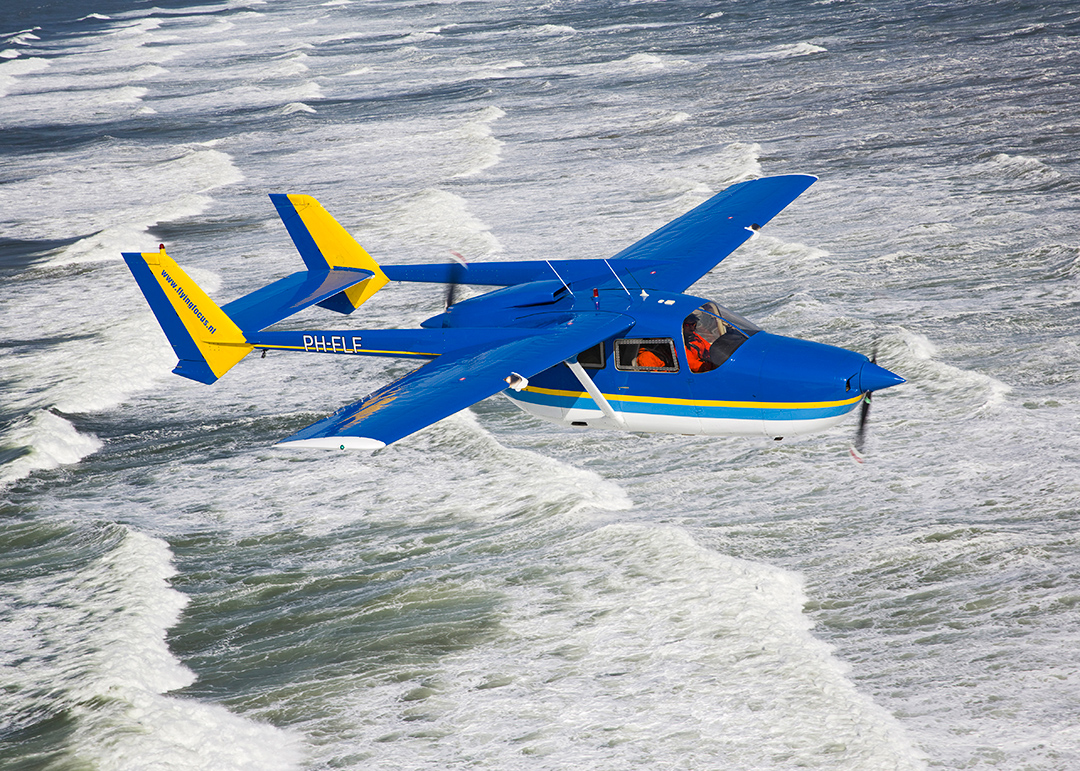 In the past I had seen a Cessna Skymaster operating from Texel airport for some time and talked to the very enthoustastic pilot/owner. This Cessna design from the sixties was unique with two engines in centre-line thrust, one in front and one behind the cabin between two tailbooms. In case of an engine failure there is no imbalance with this design and the flight can be continued easily on the good running engine that remains. In time we got more and more excited about the characteristics and performance: 140 knots cruising speed, good slow behaviour, 6 hours endurance and no engines in the way for the photographer.
In the past I had seen a Cessna Skymaster operating from Texel airport for some time and talked to the very enthoustastic pilot/owner. This Cessna design from the sixties was unique with two engines in centre-line thrust, one in front and one behind the cabin between two tailbooms. In case of an engine failure there is no imbalance with this design and the flight can be continued easily on the good running engine that remains. In time we got more and more excited about the characteristics and performance: 140 knots cruising speed, good slow behaviour, 6 hours endurance and no engines in the way for the photographer.
You still continue to hear the same comments; a noisy aircraft, expensive maintenance and possible cooling problems for the rear engine. Time to talk to experienced Skymaster pilots. We found one based on Antwerpen Airport and he was willing to show us his aircraft and to tell all about this special design, followed by a test flight. But what about the poor accident statistics? After evaluating many accidence reports on the website of the American NTSB we concluded that most accidents in the early stages had nothing to do with the design, but more with the fact that there was regulation to fly the machine with a ‘centre-line-trust’ approval. A MEP (Multi Engine Piston) license was not necessary and it was easy to move one from a simple single engine aircraft to this complex twin, with retractable gear, a complex fuel management system and adjustable propellers. Most accidents in the beginning were pilot errors. For instance, being not able to take-off because the pilot was not aware the rear engine was inoperative. Or crashing because of an empty fueltank while there was enough fuel available in the other tanks.
The 337 Skymaster got a bad reputation because of the accidents in the beginning of its ‘career’ and the rumours about cooling problems for the rear engine and expensive maintenance. Luckily we talked to very experienced 337 pilots who were very positive about the performance. So in 2004 we purchased a Cessna 337B in USA which arrived at Midden Zeeland in november 2004 to be modified for our special job. In January 2005 we took off for our first stormflight with the 337 with Beaufort 9 from the southwest. We were impressed about the amount of wind the aircraft could endure, about the stable platform it was for the photographer and in general about the good performance. Now, more than 15 years and more than 1200 flying hours later, I am still 100% in favour of the decision to operate this unique aircraft.
Expensive in maintenance proved to be true, but the safety of the centre-line thrust concept is more than worth the investment. We did photoflights with Beaufort 10 and 60 knots of wind, mostly we were the only ones operating over the North Sea at that time. We flew non-stop to Ireland and Finland without any problems and are also flying out to the middle of the North Sea, 200 Nm offshore, on a regular basis. We never experienced cooling problems on the rear engine, likely because the air over the cold North Sea is never above 20 degrees Celsius. The aircraft is coming of age and we have to spend large amounts of money in keeping the plane airworthy due to all kind of age related inspections. In my opinion it is the only concept suitable for our special operation, so it is worth the investment. Like on the North Pole where they are still flying with the classic DC-3 Dakota, the unique concept offers unique operating possibilities.

